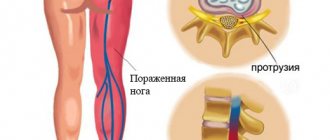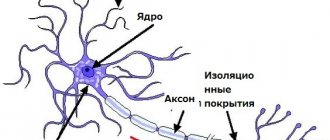The pituitary gland is the most important gland in the human body. The task of the gland is to produce hormones that will regulate the production of other hormones, thereby maintaining the normal state of the body. With a lack or excess of pituitary hormones, a person develops various diseases.
Lack of organ function leads to the following diseases:
- hypothyroidism;
- dwarfism;
- diabetes insipidus;
- hypopituitarism.
An excess of hormones provokes the development of:
- hyperthyroidism;
- hyperprolactinemia;
- gigantism or acromegaly;
- Itsenko-Cushing's disease.
Functions of the pituitary gland
In human physiology, the pituitary gland plays a very important role, despite the fact that it is a small appendage of the brain.
This endocrine gland is the center of the endocrine system. It produces hormones that influence various processes in the human body, including the following:
- reproduction,
- height,
- exchange processes.
Neoplasms that appear in this area certainly affect hormonal levels and provoke the development of various neurological diseases.
For reference! Pathologies of the pituitary gland, as a rule, arise in middle age (30-45 years) and occur with equal frequency in women and men. However, small tumors often remain undiagnosed, since in most cases they occur without symptoms.
Secondary hypocortisolism (secondary adrenal insufficiency)
General weakness, moderate weight loss, tendency to hypoglycemia, orthostatic hypotension, tendency to infectious diseases.
In contrast to primary adrenal insufficiency (damage to adrenal tissue), in secondary adrenal insufficiency the deficiency of mineralocorticoids is less pronounced, for the production of which adrenocorticotropic hormone (ACTH) does not serve as the main regulator. Therefore, in most patients, blood pressure (BP) is not reduced and severe electrolyte disturbances (hyperkalemia, hyponatremia) are not typical for them. The difference from primary adrenal insufficiency is also the absence of skin hyperpigmentation (“Addison’s white”) and its depigmentation (which is associated with the parallel production of ACTH and melanocyte-stimulating hormone).
Causes of tumors
To date, the direct causes of pituitary tumors or cancer are unknown to medicine.
However, there are a number of risk factors that contribute to the development of formations. It includes the following items:
- use of hormonal drugs,
- infectious diseases of the nervous system,
- traumatic brain injuries,
- chronic sinusitis,
- genetic predisposition,
- the influence of adverse factors on the fetus during pregnancy.
There are also various scientific theories regarding the occurrence of pituitary tumors.
According to one of them, this pathology may be caused by hyperfunction of the hypothalamus or hypofunction of peripheral glands.
Some researchers tend to associate the proliferation of pituitary cells with a genetic pathology in one of them.
The role of diagnostics in the treatment of pituitary tumors
Malignant tumors of the pituitary gland are rare diseases, but they can have a very negative impact on human health, therefore, if an oncological process of an endocrine nature is suspected, a differentiated approach to examination is required. All procedures and tests performed in foreign diagnostic centers with maximum accuracy confirm or refute the pathology. High-quality diagnostics is one of the components when calculating the cost of cancer treatment abroad.
Today, examination for pituitary tumors usually includes molecular genetic testing, digital radiography, endoscopic examination, angiography, CT, MRI, PET-CT, and biopsy.
After the diagnosis is completed, a program with individual treatment tactics is drawn up.
Main symptoms of tumors
Symptoms of a pituitary tumor are primarily determined by its location and its effect on the production of a specific hormone.
Most often, women experience neurological manifestations, including the following conditions:
- neuritis/neuralgia/logoneurosis,
- dementia disorders,
- severe attacks of headaches, loss of consciousness,
- insomnia,
- visual impairment,
- vegetative-vascular dystonia,
- chronic runny nose.
In women, a pituitary tumor may have symptoms that also manifest themselves externally. In this case, the following symptoms are observed:
- The size of the skull, nose and cheekbones increases.
- The jaw is deformed.
- The chest and limbs are enlarged. Enlargement of the palms and feet is most common.
- Body weight increases.
- Male pattern hair appears.
Certain types of tumors can cause a woman to miss menstruation, which consequently leads to infertility.
In men, enlargement of the mammary glands and galactorrhea, which is manifested by the release of a liquid resembling milk from the glands, is possible.
The following symptoms are also characteristic of this condition:
- severe migraines,
- loss of sexual desire,
- tides.
Tumors and cancer of the pituitary gland provoke a strong increase in sweating, as well as changes in the bite as a result of divergence of teeth.
Important! In children, this pathology often leads to gigantism. In this case, pathological growth is observed. The world's tallest man has been diagnosed with a pituitary tumor.
Signs of diseases associated with a lack of gland function
- Hypothyroidism is a disease in which there is a decrease in the functioning of the thyroid gland. Main symptoms: constant fatigue, weakness in the arms, low mood. Dry skin, brittle nails, headaches and muscle pain.
- Dwarfism. The first signs of the disease are detected only in the second or third year of life. The child's growth and physical development slows down. With timely treatment, normal growth can be achieved. During puberty, such people must take sex hormones.
- Diabetes insipidus is characterized by frequent urination and thirst. A person can excrete up to 20 liters of urine per day. The reason for this is a lack of the hormone vasopressin. Treatment can lead to a full recovery, but this does not always happen.
- Hypopituitarism is a disease in which the production of hormones by the anterior pituitary gland is disrupted. Symptoms of the disease will depend on which hormones are produced in small quantities. Women, like men, can suffer from infertility. In women, the disease manifests itself in the form of absence of menstruation, in men – in the form of impotence, decreased sperm count, and testicular atrophy.
Tumors of benign and malignant nature
In most cases, neoplasms in this area are benign and are called adenomas.
They differ significantly from cancer, which also has its own characteristics.
Benign neoplasms
A benign tumor of the pituitary gland grows slowly and, despite the fact that it puts pressure on neighboring tissues, almost never grows into them.
Its cells continue to partially perform the functions inherent in healthy cells.
Such neoplasms, as a rule, are easily removed by surgery and do not recur.
There are 4 main types of such formations, which differ in size. Thus, benign tumors are divided into the following types:
- Giant adenoma: the largest type in size.
- Macroadenoma: the tumor is larger than 1 centimeter.
- Microadenoma: tumor less than 1 cm.
- Picoadenoma: formation less than 3 mm.
The tumor gland can be hormonally active or inactive, that is, participate in the production of hormones or not.
Active glands, in turn, can produce the following hormones:
- a growth hormone,
- sex hormone,
- prolactin,
- thyrotropin,
- corticosteroid hormone.
The production of a specific hormone also determines the location of the pituitary tumor.
Malignant neoplasms
Cells of such formations lose the ability to perform their functions and control growth. They penetrate neighboring organs and tissues and also affect blood vessels.
They are characterized by rapid growth, and therefore such pathologies are poorly treated and often recur. The advisability of surgery depends entirely on the stage of the cancer.
Important! In the early stages, before cells penetrate into neighboring organs and tissues, surgical interventions usually have a favorable prognosis. However, after germination and metastases occur, in most cases the cancer is not operated on.
Malignant neoplasms of the pituitary gland are extremely rare and are called carcinomas.
They are large in size and have unclear boundaries, and have an irregular shape, unlike neoplasms of a benign nature.
The main symptoms of pituitary cancer are severe migraines and visual disturbances.
In some cases, complete loss of vision is possible. In men, due to the pathology, sexual dysfunction is observed, in women – problems with the cycle.
Varieties
Pituitary tumors come in different types, which are classified depending on the method of their appearance and activity.
Based on hormonal activity, the following types of pituitary tumors are distinguished:
- Silent or non-producing biologically active substances.
- Hormone-producing, which in turn are divided into the following types: somatotropic;
- prolactin;
- corticotropic;
- thyroid-producing.
Diagnostics
Diagnosis of a pituitary tumor requires a thorough ophthalmological and hormonal examination.
Studying the state of the organs of vision makes it possible to determine the size of the tumor and determine in which direction it is growing. To determine hormone levels, urine and blood tests are performed.
For the purpose of neuroimaging of tumors, the following brain diagnostic methods are prescribed:
- CT scan,
- x-ray examination,
- Magnetic resonance imaging.
X-ray examination reveals only a small part of pituitary tumors, since it only shows tumors of significant size that affect neighboring organs.
Adenomas not exceeding 1 cm in size are diagnosed exclusively using CT and MRI, which make it possible to determine their size and location as accurately as possible.
Secondary hypothyroidism
In this condition, there are classic manifestations of hypothyroidism, but with secondary hypothyroidism they are somewhat less pronounced than with primary hypothyroidism. Polyserositis, circulatory failure, anemia are uncharacteristic.
A dangerous mistake is often made in the treatment of these diseases: since secondary hypothyroidism is often combined with secondary hypocortisolism, and thyroid hormones accelerate the clearance of glucocorticoids, treatment should begin with replacement therapy for adrenal insufficiency and only then add thyroid hormones. Otherwise, there is a high risk of developing an adrenal insufficiency crisis and death of the patient.
Treatment methods
Treatment of a pituitary tumor directly depends on its type and stage of development. Typically it may include the following methods:
- drug therapy,
- radiosurgical treatment,
- surgical intervention,
- complex therapy.
Each type has its own characteristics, which should be considered in more detail.
Drug treatment
Conservative therapy is used primarily to restore the optimal levels of hormones in the human body and to resolve the tumor.
For this purpose, dopamine agonists are used, which provoke its wrinkling and dissolution.
Most often, conservative treatment of pituitary tumors involves the use of the following drugs:
- Cyproheptadine,
- Cabergoline,
- Bromocriptine.
These drugs primarily affect tumors that produce corticosteroid hormones and prolactin.
Radiosurgery therapy
This method is used primarily in cases where surgical intervention is impossible for certain reasons. The method is also indicated for elderly patients.
Its essence consists in irradiating the tumor with radiation beams from different sides, the dose of which is determined by the size of the tumor and its type.
The result is observed in cases of long-term use of this method. Sometimes it takes up to 10 years or more to get the effect.
The main advantage of radiation therapy is its complete non-invasiveness, however, among the disadvantages of the method are certain side effects and a number of contraindications.
For example, radiation is not used if the tumor is close to the optic nerves.
Surgical intervention
This is the most effective method for eliminating pituitary tumors, which is also used in the early stages of cancer in this area.
Modern medicine allows surgery to be performed through the nasal passage.
This method is as safe as possible, does not require incisions and does not provoke subsequent infection or other complications.
For reference! Endonasal intervention involves the use of a probe and special small instruments that provide access to the skull area through the nose. All manipulations and the location of the tumor are displayed on the monitor, so removing the tumor is not difficult. After such an operation, the patient can be discharged within a few days.
Cushing's disease/syndrome
Arterial hypertension, osteoporosis/pathological fractures, obesity of a pronounced central type (extremities remain thin), characteristic changes (rounding) of the face, purple stretch marks on the skin of the trunk and thighs, sexual dysfunction in men and women, changes in the smell of sweat, nephrolithiasis and pyelonephritis , signs of decreased immunity, hyperglycemia. In young women with the manifestation of Cushing's syndrome/disease, amenorrhea or menstrual irregularities are often the reason for visiting a doctor.
The opposite mistake is overdiagnosis of Cushing's syndrome/disease (usually in patients with obesity and arterial hypertension, and in alcohol abusers). Such a patient may have functional hypercortisolism, manifested by increased basal (morning) cortisol levels, and often increased daily urinary excretion of free cortisol. Often in this case, a complex and expensive examination begins to look for a pituitary or adrenal adenoma, although it should not be carried out until the fact of hypercortisolism has been proven using at least two positive screening tests. To both exclude and confirm Cushing's syndrome/disease, at least two tests should be used (and in doubtful cases, a follow-up examination should be carried out after 3-6 months).











